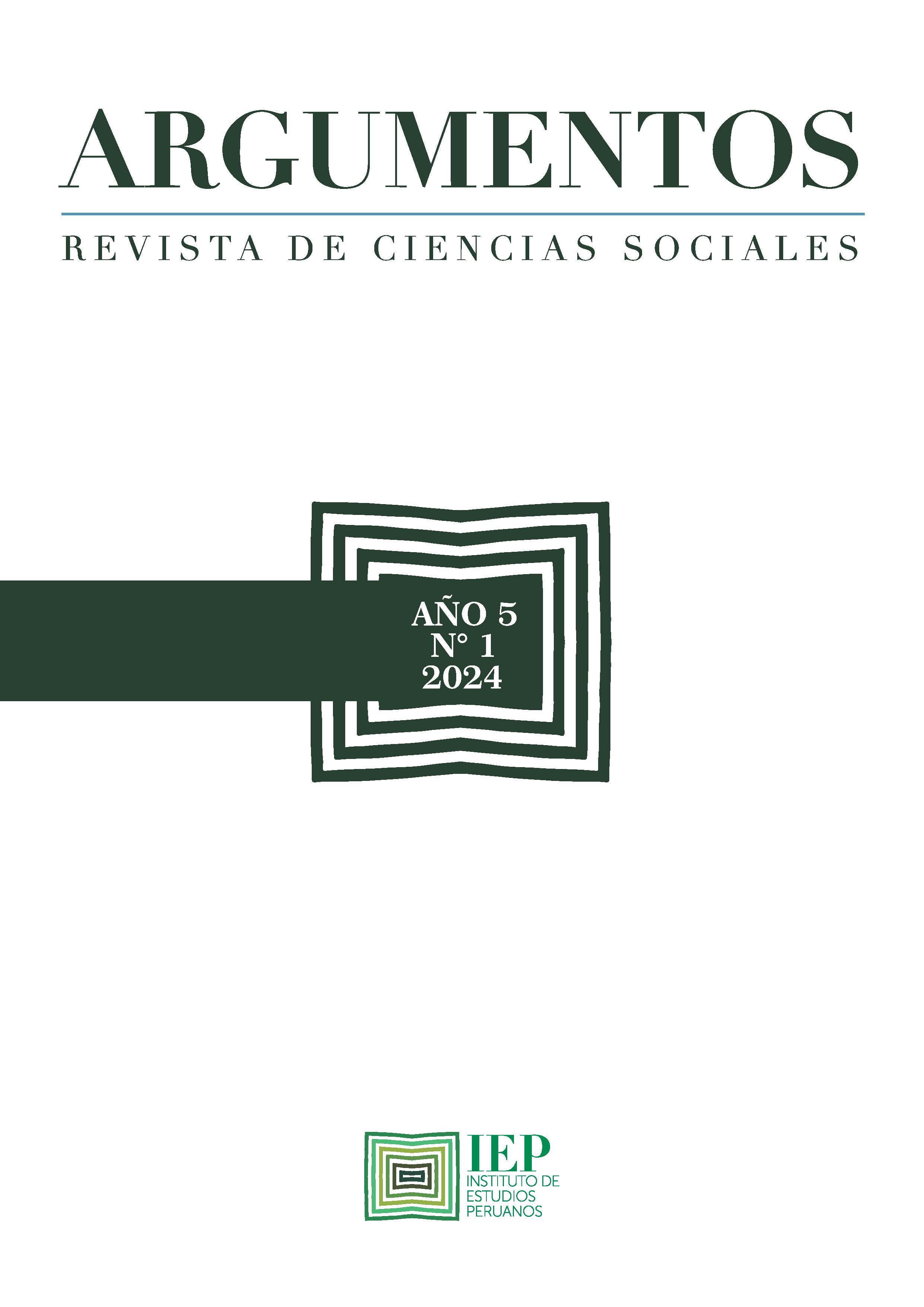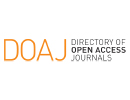Impact of mass transit on informal housing: The case of Line 1 of the Lima Metro
Abstract
In low- and middle-income countries, the relationship between transportation infrastructure and urban development is unclear. Peru presents a unique opportunity to study this relationship, because there is mass transportation that crosses areas where urban planning is not a priority. This research evaluates the impact of the train in the capital of Peru on housing informality. To do this, georeferenced data is used to identify homes that are in areas surrounding the train. The temporal heterogeneity of the train implementation allows a Difference in Differences model to be estimated. Once the comparability of the treated and control groups is ensured, the main result supports a reduction in housing informality. This result is robust to using other treatment definitions and placebo tests.Keywords: Urban development, Housing informality, Transportation infrastructure, Quasi-experimental methods, Latin American cities.
References
AATE (2012). Informe Anual 2012. Lima: Autoridad Autónoma del Tren Eléctrico.
Alba-Vivar, F. (2024). Opportunity Bound: Transport and Access to College in a Megacity. Unpublished Manuscript.
Banister, D., & Berechman, Y. (2001). Transport investment and the promotion of economic growth. Journal of Transport Geography, 9(3), 209-218. https://doi.org/10.1016/s0966-6923(01)00013-8
Baum-Snow, N., & Turner, M. A. (2017). Transport Infrastructure and the Decentralization of Cities in the People’s Republic of China. Asian Development Review, 34(2), 25-50. https://doi.org/10.1162/adev_a_00094
Billings, S. B., (2011). Estimating the value of a new transit option. Reg. Sci. Urban Econ. 41, 525–536. https://doi.org/10.1016/j.regsciurbeco.2011.03.013
Bocarejo, J. P., & Oviedo H, D. R. (2012). Transport accessibility and social inequities: a tool for identification of mobility needs and evaluation of transport investments. Journal Of Transport Geography, 24, 142-154. https://doi.org/10.1016/j.jtrangeo.2011.12.004
Boisjoly, G., Moreno-Monroy, A. I., & El-Geneidy, A. (2017). Informality and accessibility to jobs by public transit: Evidence from the São Paulo Metropolitan Region. Journal Of Transport Geography, 64, 89-96. https://doi.org/10.1016/j.jtrangeo.2017.08.005
Cervero, R., & Murakami, J. (2009). Rail and Property Development in Hong Kong: Experiences and Extensions. Urban Studies, 46(10), 2019-2043.
Chi, F. & Han, H. (2023). The Impact of High-Speed Rail on Economic Development: A County-Level Analysis. Land 12, 874. https://doi.org/10.3390/land12040874
Cohen, B. (2006). Urbanization in developing countries: Current trends, future projections, and key challenges for sustainability. Technology In Society, 28(1-2), 63-80. https://doi.org/10.1016/j.techsoc.2005.10.005
Cohen, J.P., & Paul, C.M., (2007). The impacts of transportation infrastructure on property values: a higher-order spatial econometrics approach. J. Reg. Sci. 47, 457–478. https://doi.org/10.1111/j.1467-9787.2007.00516.x.
Dorantes, L.M, Páez, A., & Vassallo, J. M. (2011). Analysis of House Prices to Assess Economic Impacts of New Public Transport Infrastructure. Transportation Research Record, 2245(1), 131-139. https://doi.org/10.3141/2245-16
Durst, N. J., & Wegmann, J. (2017). Informal Housing in the United States. International Journal Of Urban And Regional Research, 41(2), 282-297. https://doi.org/10.1111/1468-2427.12444
Efthymiou, D., Antoniou, C., (2013). How do transport infrastructure and policies affect house prices and rents? Evidence from Athens, Greece. Transport. Res. Pol. Pract. 52, 1–22. https://doi.org/10.1016/j.tra.2013.04.002.
Esfahani, H. S., & Ramı́Rez, M. T. (2003). Institutions, infrastructure, and economic growth. Journal Of Development Economics, 70(2), 443-477. https://doi.org/10.1016/s0304-3878(02)00105-0
Gibbons, S., Machin, S., (2005). Valuing rail access using transport innovations. J. Urban Econ. 57, 148–169. https://doi.org/10.1016/j.jue.2004.10.002
Glaeser, E.L., Kahn, M.E., Rappaport, J., (2008). Why do the poor live in cities? The role of public transportation. J. Urban Econ. 63, 1–24. https://doi.org/10.1016/j. jue.2006.12.004
Hansen, W. G. (1959). How Accessibility Shapes Land Use. Journal of the American Institute of Planners, 25(2), 73-76.
Litman, T. (2020). Evaluating Public Transit Benefits and Costs. Victoria Transport Policy Institute.
Liu, T.-Y., & Su, C.-W. (2021). Is transportation improving urbanization in China? Socio-Economic Planning Sciences, 77(101034), 101034. https://doi.org/10.1016/j.seps.2021.101034
Mahabir, R., Crooks, A., Croitoru, A., Agouris, P., (2016). The study of slums as social and physical constructs: challenges and emerging research opportunities. Regional Studies, Regional Science 3, 399–419. https://doi.org/10.1080/ 21681376.2016.1229130.
Manaster, K.A., (1968). The problem of urban squatters in developing countries: Peru. Wisconsin Law Review 23, 23-61.
Mo, J. (2023). Heterogeneous effects of urban transport infrastructure on population distribution: The role of educational access. Regional Science And Urban Economics, 101, 103902. https://doi.org/10.1016/j.regsciurbeco.2023.103902
MTC. (2019). Balance y Perspectivas de la Gestión. Ministerio de Transporte y Comunicaciones.
Pastor, L., Stambaugh, R., & Taylor, L. (2019). Sustainable investing in equilibrium. National Bureau of Economic Research.
Posada, H. M., & García-Suaza, A. (2022). Transit infrastructure and informal housing: Assessing an expansion of Medellín’s Metrocable system. Transport Policy, 128, 209-228. https://doi.org/10.1016/j.tranpol.2022.09.011
Redding, S. J., & Turner, M. A. (2015). Transportation Costs and the Spatial Organization of Economic Activity. En Handbook of Regional and Urban Economics (pp. 1339-1398). https://doi.org/10.1016/b978-0-444-59531-7.00020-x
Roy, A. (2009). Why India Cannot Plan Its Cities: Informality, Insurgence and the Idiom of Urbanization. Planning Theory, 8(1), 76-87. https://doi.org/10.1177/1473095208099299
Scholl, L., Martinez, D., Mitnik, O. A., Oviedo, D. & Yañez-Pagans, P. (2018). A rapid road to employment? The impacts of a Bus Rapid Transit System in Lima. Working Paper N 00980. Washington, D.C.: BID.
Solomon, M. (1996). Housing cooperatives in Addis Ababa: Achievements and problems; Urban Ethiopia: evidence of the 1980s; post-graduate program in urban and regional planning for developing countries; Venice, November 1996 (pp:235–257).
Sun, Y., & Cui, Y. (2018). Evaluating the coordinated development of economic, social and environmental benefits of urban public transportation infrastructure: Case study of four Chinese autonomous municipalities. Transport Policy, 66, 116-126. https://doi.org/10.1016/j.tranpol.2018.02.006
Tveter, E. (2022). The impact of infrastructure investment on migration from rural islands. Case Studies On Transport Policy, 10(3), 1531-1538. https://doi.org/10.1016/j.cstp.2022.05.012
UN-Habitat (2003). The challenges of slums, global report on human settlements. Manag. Environ. Qual. Int. J. 15, 337–338. https://doi.org/10.1006/abio.1996.0254.
Velásquez, D. (2023). Transit Infrastructure, Couples’ Commuting Choices, and Gender Earnings Inequality. Unpublished manuscript.
Vieda, S. (2021). Housing Informality beyond The Urban Poor: Spatialities, Public Institutions, and Social Injustice in Rich Settlements of Bogotá. Phd Thesis in Urban Studies and Regional Sciences. Gran Sasso Science Institute.
Wan, J., Xie, Q., & Fan, X. (2024). The impact of transportation and information infrastructure on urban productivity: Evidence from 256 cities in China. Structural Change and Economic Dynamics, 68, 384–392. https://doi.org/10.1016/j.strueco.2023.11.008
Wang, X., Tang, D., Liu, Y., & Bu, T. (2023). The impact of high‑speed railway on labor market between the North and South: evidence from China. The Annals of Regional Science, 71, 487-515. https://doi.org/10.1007/s00168-022-01178-y
Xueliang, Z. (2013). Has transport infrastructure promoted regional economic growth? with an analysis of the spatial spillover effects of transport infrastructure. Social Sciences in China, 34(2), 24–47. https://doi.org/10.1080/02529203.2013.787222
Yang, X., Dong, X., & Yi, C. (2022). Informal housing clearance, housing market, and labor supply. Labour Economics, 78(102199), 102199. https://doi.org/10.1016/j.labeco.2022.102199
Zamorano, L. (2018). Identificación de plusvalías generadas por el sistema de transporte público Metrobús (BRT) en la Ciudad de México. Documento de Trabajo WP18LZ1SP. Lincoln Institute of Land Policy.
Zhang, Y., & Cheng, L. (2023). The role of transport infrastructure in economic growth: Empirical evidence in the UK. Transport Policy, 133, 223–233. https://doi.org/10.1016/j.tranpol.2023.01.017
Zhang, Y. & Xu, D., (2023). Service on the rise, agriculture and manufacturing in decline: The labormarket effects of high-speed rail services in Spain. Transportation Research Part A, 171.
Zhao, P., & Zhang, M. (2018). Informal suburbanization in Beijing: An investigation of informal gated communities on the urban fringe. Habitat International, 77, 130-142. https://doi.org/10.1016/j.habitatint.2018.01.006
Copyright (c) 2024 Diego Aguilar

This work is licensed under a Creative Commons Attribution 4.0 International License.








